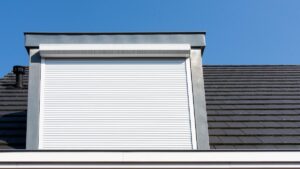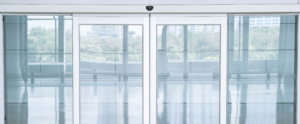

What is the difference between folding door and bi-folding door?
- July 17, 2023
- admin

When it comes to enhancing the aesthetics and functionality of your space, selecting the right door style can make a significant difference. Two popular options that offer versatility and elegance are folding doors and bi-folding doors. In this blog post, we will delve into the differences between these two types of doors and help you understand which one might be the ideal choice for your property.
What are Folding Doors?
Folding doors, also known as accordion doors or concertina doors, consist of multiple panels that fold back upon themselves when opened. They operate on a track system, allowing smooth and effortless movement. Folding doors are known for their ability to create wide openings and seamlessly merge indoor and outdoor spaces. They are a popular choice for patio entrances, conservatories, and large living areas.
Key Features of Folding Doors:
- Smooth and easy operation with a track system.
- Can be customized to accommodate different panel configurations.
- Typically made of materials such as aluminum, uPVC, or timber.
- Provide expansive views and ample natural light.
- Ideal for spaces with wide openings.
What are Bi-Folding Doors?
Bi-folding doors are similar to folding doors, but they have an additional folding mechanism that allows the panels to stack neatly to one or both sides when fully opened. This stacking configuration maximizes the opening space and provides unobstructed views. Bi-folding doors are particularly favored for connecting indoor and outdoor areas, such as garden entrances, terrace openings, and commercial spaces.
Key Features of Bi-Folding Doors:
- Effortless folding action, offering flexibility in opening options.
- Panels fold neatly to create a sleek and compact stack.
- Available in various materials.
- Provide wide unobstructed views and abundant natural light.
- Ideal for spaces that require seamless connection to the outdoors.
Folding Doors Versus Bi-Folding Doors
Opening Configuration:
- Folding Doors: Folding doors operate in a concertina-style folding motion, folding back onto themselves.
- Bi-Folding Doors: Bi-folding doors fold and stack neatly to one or both sides, creating a compact stack when fully opened.
- Panel Configuration:
- Folding Doors: Folding doors typically have a smaller number of panels, often in larger sizes. The panels fold back onto each other when opened.
- Bi-Folding Doors: Bi-folding doors usually consist of multiple smaller panels that fold and stack together. They offer greater design flexibility as they can accommodate a larger number of panels.
Space Requirement:
- Folding Doors: Folding doors can be a space-saving option in certain scenarios as they fold back onto themselves without requiring much additional space.
- Bi-Folding Doors: Bi-folding doors require additional space for the panels to stack when fully opened. This needs to be taken into consideration when planning the installation.
Flexibility:
- Folding Doors: Folding doors provide a straightforward folding motion, usually opening in one direction. They offer a simpler operation and are ideal for situations where a wide opening is desired.
- Bi-Folding Doors: Bi-folding doors offer more flexibility in terms of opening configurations. They can be partially opened, allowing for ventilation, or fully opened to create a wide access point. This flexibility is especially useful when you want to customize the opening size depending on the specific needs.
Maximum Opening Width:
- Folding Doors: Folding doors typically have a maximum opening width that is limited by the number of panels and their size. They are well-suited for medium to large openings.
- Bi-Folding Doors: Bi-folding doors can accommodate much wider openings compared to folding doors. With their ability to stack multiple panels together, they can create expansive openings, ideal for larger spaces or panoramic views.
Threshold Options:
- Folding Doors: Folding doors often offer various threshold options, including standard thresholds or low thresholds for seamless transitions between indoor and outdoor spaces.
- Bi-Folding Doors: Bi-folding doors also provide different threshold options, including standard, low, or flush thresholds. The choice of threshold depends on factors such as accessibility, and architectural requirements.
Design Flexibility:
- Folding Doors: Folding doors are available in various designs and materials, including timber, aluminum, and uPVC. They offer a more classic and streamlined appearance.
- Bi-Folding Doors: Bi-folding doors come in a wide range of design options and materials, allowing for greater customization. They can be designed with slim sightlines, larger glass panels, or even corner configurations, providing more architectural flexibility.
Sightlines:
- Folding Doors: Folding doors typically have wider sightlines due to the size of the panels and the folding mechanism. This may result in slightly obstructed views compared to bi-folding doors.
- Bi-Folding Doors: Bi-folding doors can have slimmer sightlines, as they consist of multiple smaller panels. This allows for larger glass areas and more expansive views.
Conclusion
In conclusion, folding doors and bi-folding doors offer unique features and advantages, allowing you to transform your space and create seamless connections between indoor and outdoor areas. The choice between these two types of doors depends on your specific requirements, available space, and design preferences. Folding doors are known for their elegant and classic appearance, with fewer panels that fold back onto themselves. They are well-suited for medium to large openings, providing a straightforward folding motion and a space-saving solution. On the other hand, bi-folding doors offer greater design flexibility with their ability to stack multiple smaller panels neatly to one or both sides. They are ideal for wider openings and can create expansive views with their slim sightlines.
Consider factors such as the maximum opening width, threshold options, design flexibility, and sightlines when deciding between folding doors and bi-folding doors. Additionally, consult with professionals or suppliers who specialize in doors to gain further insight and ensure you select the right style to suit your specific needs. No matter which type of door you choose, investing in high-quality doors from a reputable supplier is essential to ensure long-lasting durability, optimal performance, and enhanced aesthetics for years to come. With the right selection, your folding doors or bi-folding doors will undoubtedly enhance the functionality and beauty of your space.
FAQs (Frequently Asked Questions)
- Are folding doors and bi-folding doors the same thing?
While both folding doors and bi-folding doors share similarities, they have distinct differences. Folding doors typically consist of fewer panels that fold back onto themselves, while bi-folding doors consist of multiple smaller panels that fold and stack neatly to one or both sides.
- Which type of door is better for larger openings?
Bi-folding doors are generally better suited for larger openings as they can accommodate a greater number of panels, allowing for wider access and expansive views.
- Can folding doors and bi-folding doors be customized to fit specific design preferences?
Yes, both folding doors and bi-folding doors can be customized to fit specific design preferences. They are available in various materials, finishes, and configurations, providing flexibility to match your aesthetic vision.
- Do folding doors and bi-folding doors provide good natural light and views?
Yes, both types of doors are designed to maximize natural light and offer unobstructed views. However, it’s important to consider the sightlines of each door type, as folding doors may have wider sightlines due to the size of the panels.
- Can I choose different threshold options for folding doors and bi-folding doors?
Yes, both folding doors and bi-folding doors offer different threshold options, including standard, low, or flush thresholds. The choice depends on factors such as weather resistance, accessibility, and architectural requirements.
- Are folding doors and bi-folding doors durable?
The durability of folding doors and bi-folding doors depends on the quality of the materials used and proper installation. It is recommended to choose high-quality doors from reputable suppliers to ensure long-lasting durability.
- Can these types of doors be used for both residential and commercial applications?
Yes, both folding doors and bi-folding doors are suitable for both residential and commercial applications. They can enhance the aesthetics and functionality of various spaces, including homes, offices, restaurants, and retail establishments.





